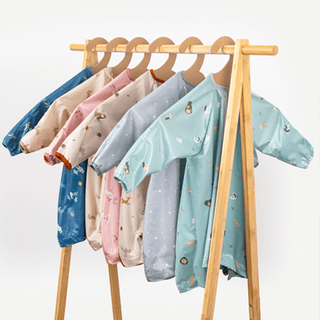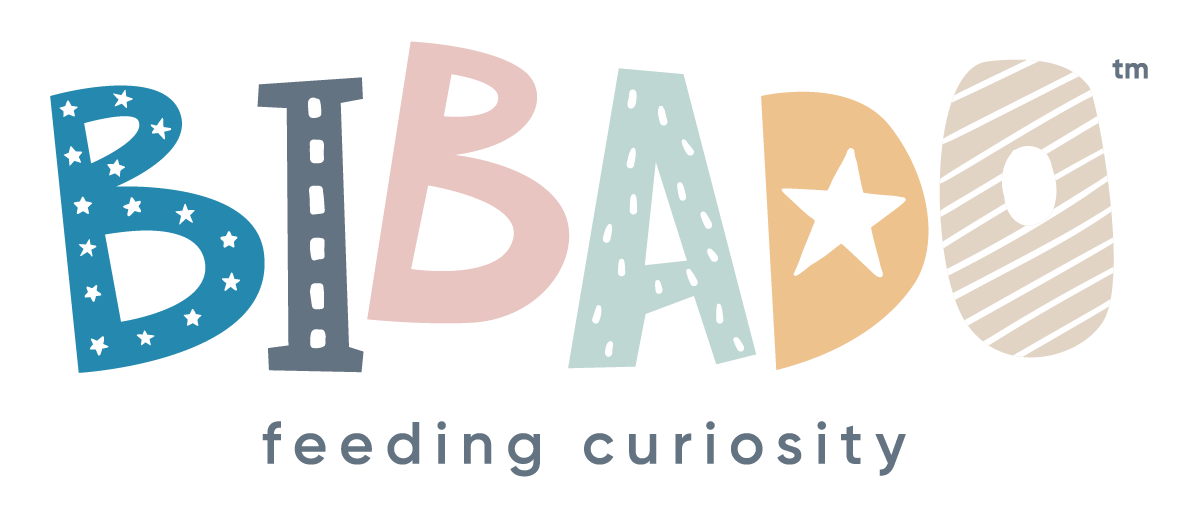Mealtime adventures are better with Bibado! Let our award-winning products make a difference to your weaning journey.
 Shop Now
Shop Now


We caught up with mum of 3 and the founder of Solid Starts Jenny Best on episode 2 of our Feeding Curiosity podcast. During our chat, we discussed all things weaning, including how to get started and why you should channel a dinner party vibe.

When should I start weaning my baby?
This is such an important question and one that has changed several times over the years. Can you believe that during the 1950s the recommended weaning age was just 4 weeks old! It’s crazy now to look back, but back then it was the norm.
Now in 2022, the recommended weaning age from the WHO and NHS is 6 months.
How do I know if my baby is ready to start weaning?
In addition to the recommended weaning age being 6 months, there are key indicators to look for. Your baby should be able to:
You also want them to be showing an interest in food because if you start too early your baby can wonder what is going on and that can actually create a bit of a negative association with eating, which we want to avoid.
It is important to remember that all babies are different and that the 6-month marker is a guideline to be used alongside when they’ve developed these skills.

What food should I start with?
A good place to start is with foods that can be easily sucked down, this doesn’t have to be completely smooth but should not be a choking hazard. Purees are not developmentally necessary although many parents do feel more confident starting with them. When serving firm vegetables as part of your babies meal be sure to steam them until they’re very soft - this means the baby's gums will be able to smush them and break it down enough to swallow. Broccoli florets and soft carrot batons are a good way to introduce handheld foods right from the start but remember they should pass the squish test.
To really strengthen their jaws and get that chew reflex going you can give your baby foods like a whole raw carrot. But this is only under supervision and after six months old. The longer a child is on textureless food, particularly if they have no other exposure to finger food, the more at risk they are of jaw weakness and tooth eruption issues. So we really want to try and combat this as early as possible. Jenny suggests introducing flavour and texture right from the very start of your weaning journey.
Did you know that studies have shown over time babies who are started with very bland, textureless, beige-coloured foods like rice, pasta, and plain bread, tend to prefer those types of foods later on? The flip side of that is that kids who start with a colourful wide variety of foods tend to eat more vegetables as toddlers and are less picky.
Is there anything I should avoid?
We’ve all seen baby rice on the shelf and been advised that this is a good place to start, however, the FDA now advises that rice is not a great early food because it absorbs heavy metals from the soil including arsenic. Due to this, single-grain cereals are no longer recommended as a first food. The reason rice cereal became so popular was because it is fortified with iron and iron is critically important for babies and young toddlers, particularly around the six month age mark. This is because the stores of iron your baby has from being in utero with mum start to deplete at around this age. It’s tricky to physically spot a lack of iron, so we must replenish these stores and that can be done with food like red meat, lentils and beans. You can read more about how to spot signs of iron deficiency here.
Food should be delicious and if we want our children to grow up as happy eaters, that food needs to taste good right from the start.
Weaning babies can be messy. How do you support that?
Babies are learning about the consistency of food and how it breaks down in their hands when they squish it. There are values in that, and by getting messy they're likely to be less sensitive and not have a tantrum when yoghurt touches their hand.
However, it doesn't have to be all or nothing. You can start with messier eating when you have the support and the time to clean it up. It’s okay to offer cleaner foods when you are busy, but let your little one use their hands and really experience what that food feels like.
The beauty is that those cleaner foods are often the ones that help your child become a better and safer eater.

Jenny suggests introducing a sensory experience through messy food play, perhaps dye some spaghetti and get your little one used to the textures in their hands as well as their mouths. Of course, if you're worried about the mess and clean-up, then we have the perfect thing to help you - the Bibado Coverall Weaning bib which has been developed to keep your little one spotlessly clean and dry not matter how much mess they're making - so you can let them get stuck in without worrying about their clothes!
How can we make mealtime adventures more fun for both parents and babies?
The best tip Jenny can give is to channel a dinner party vibe that includes you. What this means is to “cheers” your glasses, enjoy your own food, dim the lights, put some music on, and make it an experience that's enjoyable for everyone at the table. Get to your baby's level and have dinner party conversation that would engage them. The goal with that, aside from making sure you are having a good time is that babies pick up on how you're feeling at the table. The more relaxed you are the more relaxed they are.

We want to make sure that babies are also sitting at the table and are connecting with you. Remember that great line: “nobody puts baby in the corner”? The same is true of mealtimes, your baby wants to be with you getting in on the action. Otherwise, they may associate food with eating alone and being separated from everyone else.
We want to create togetherness at mealtimes and for your baby to be able to see you eating and experience some joy together in that, this way you're going to have a child who wants to come back to the table time and time again.
Follow us for more delicious, nutritious bite-size Bibado goodness